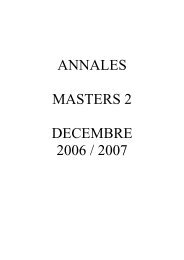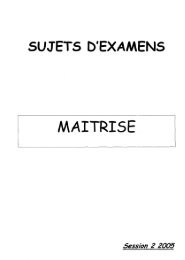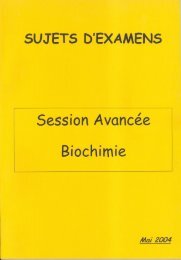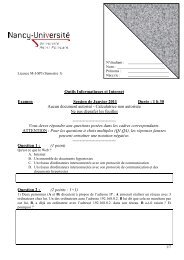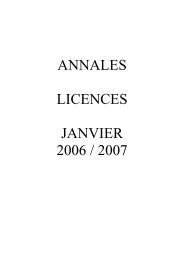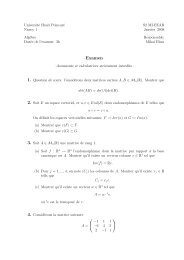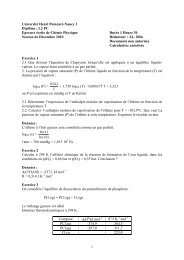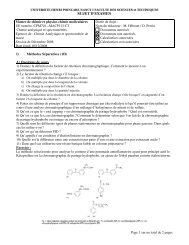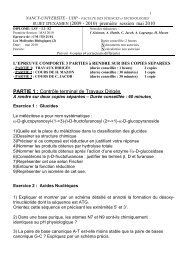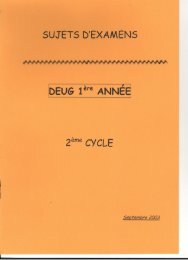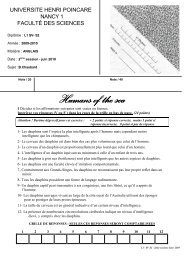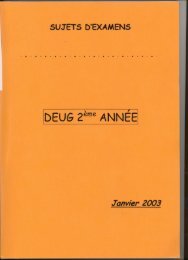Juin 2005
Juin 2005
Juin 2005
Create successful ePaper yourself
Turn your PDF publications into a flip-book with our unique Google optimized e-Paper software.
Images from beyond theedge ofthe visible universeare forcing cosmologistsback to the drawing board.Sharmila Kamat explainstheir dilemmaPostcardslight frOID distant stars or galaxies. Ta anobserver on Earth, light from these distantfrom the edgeabjects appears to come from different partsofthe sky than it really does, producingmagnified,ghostlyimages ofcelestial objects.If a distantquasar, a large galaxy and theEarthare exactly aligned, the bending oflightby the galaxy will cause the quasar to appear asGo a smeared-out ring - an Einstein ring -. aroundthe lensinggalaxy(see Graphie, page 45).But if the threeare not aligned, and the lensinggalaxy is not symmetrical, the cosmic miragecan look hopelesslycomplicated. It takesITSTANDS outlike aneonsign in 30The results say one of them must be wrong. careful study by astronomers like Kochanekthe centreof the image,a thinbluearc Leading the challengeto received wisdom to work out precisely how several strangelytloatingovera golden-redblob. is Christopher Kcchanek, who studies cosmic shaped objects in the sky can be multipleThe blobis a giantelliptica1 galaxysix billion lenses at Ohio StateUniversity in Columbus, images of the same distant quasar.Itbecomeslight years frOID Earthin the constellation TogetherwithPaul Schechter of MIT and even more complicated because quasarsFomax. The arc above it is an illusion - a cosmic ethers, Kochanek analyses lenses that produce-tc change over tirne, altemately brighteningmirage createdas the light frOID a young two, thrce, or more images of distant galaxies and dimnùng. When a quasar flashes, so doblue galaxyup to 10billionlightyearsaway and quasars. The sciencehe uses dates hack its lensed images,but they change at slightlyis draggedintoa sernicircularshapeby the to 1911,when AlbertEinsteinshowed how the differentlimes, because the light rays\0 golden-redgiant'sgravity. presence of a mass bends light rays that pass it. producing the different images take differentCaptured in 2003 by the Hubble Space 40 Aceordingto Einstein'sgeneral theory of paths through space to reach Earth.Telescope,this is just one of many stunning relativity, a large mass like that of a giant It's this time lag that can be used to pingravitationallens images that decorate the galaxywill distortspace-time. The idea of down the ageof the cosmos. By showinghowsky. Gravitationa1lensesare nature's giant distorted space-time is often compared to much longer one path through space istelescopes,givingglimpses ofwhat lies the way a bowling ball rnightmake the elastic comparedwith another, the lime delay revealsbeyond the edge ofthe visible universe. fabricofa trampolinesag.Ifa smallerbail '&7 how far apart the Jens galaxy and the distantBut lookat them in the right way and rolls across the trampoline, its path will bend quasar are. And these distances can be usedthese shining, candy-coloured arcs offer around the largerobject. In the same way, to pin down the most important nurnber inmore thanjust distorted snapshots of young light rays bend when they travel throngh the cosmology, the Hubble constant,!20 galaxies.They can also tell us about the age regions of curved space around massive We live in an expandinguniverse in whichof the cosmos and the strange clark matter Ç'6 objectslike galaxies. galaxies are reced.ing from each other.that is sprinkled thronghout il. Gravity (1) actsas. lens, detlectingthe Think of the universeas a risingloaf of raisinIn the past few years, sorne astronomersstudying cosmic lenses have begun to do justthat Their results have led them to throwdown the gauntlet to their colleegues, pittingone cherished idea against another. One ofthese ideas is the apparentage ofthe universe.The other is our understanding ofclark matter."It would force an upwards revisionin the age of the universe from 14 billion10 20 billion years"42NewlS::';ientist 13f\bvember 2004W#W. newscientist.com



